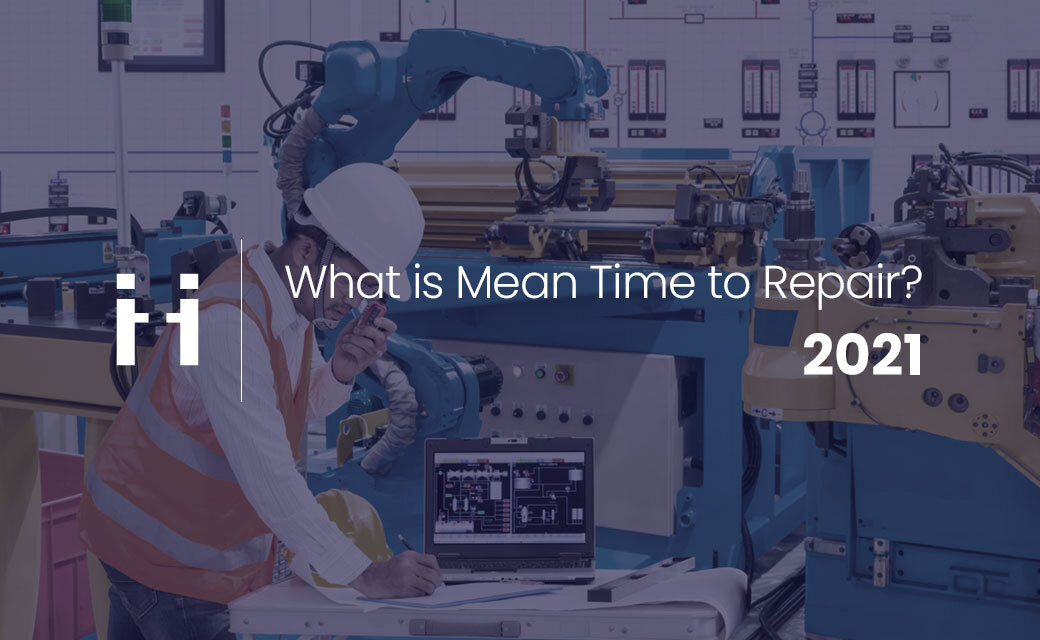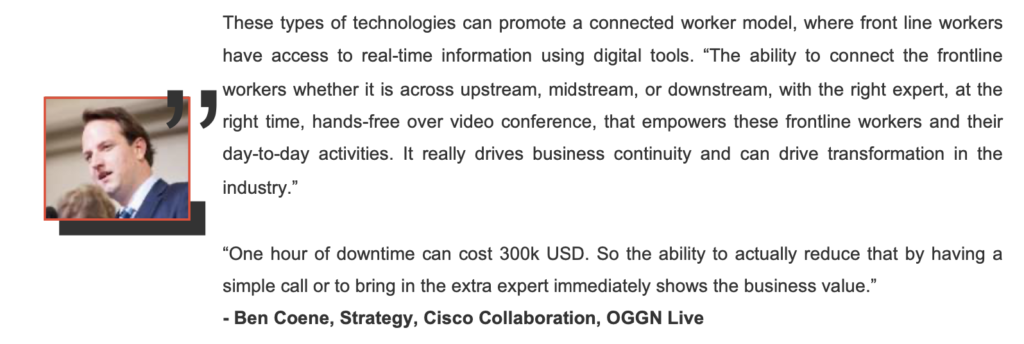
Share this article
Share this article
In an accelerating world, any drop in productivity can have severe consequences. To keep pace with modern business it’s important for companies to put in place solutions that keep their assets as functional as possible. Optimizing maintenance KPIs such as mean time to repair (MTTR) allows assets to remain operational longer, increasing the value they add.
Mean time to repair is an incident metric that measures the repair time of an asset. The MTTR time window starts when repairs begin and ends when the asset is operational. In between the bookends, MTTR includes variable steps, such as contacting an expert or initiating a dispatch, that alter the repair timelines. Optimizing these variables is central to decreasing the mean time to repair.
MTTR is calculated by dividing the total maintenance time by the total number of repairs. The higher the mean time to repair, the less operational the asset is. Lowering MTTR limits downtime, increases efficiency, and raises revenue.

Take an offshore drill for example. If it fails four times in 24 hours and the total time needed to repair all breakdowns totals 16 hours, the mean time to repair would be 16 hours / 4 = 4 hours.
It’s important to note that mean time to repair offers an average value, meaning it takes into consideration all repairs regardless of the severity. In the example above, one of the repairs could have taken one hour, and another could have taken seven hours. Additionally, to get reliable MTTR values, every repair must be handled by a competent technician following a standardized procedure.
For more specific information on an asset’s repair time, one can further divide the mean time to repair into categories such as the severity of the issue or the type of repair needed. Other asset-specific variables such as type of asset and age can be added to MTTR calculations to gain more precise insights.
Mean time between failures (MTBF) measures the average time between repairable failures of an asset. Mean time to failure (MTTF) is used for non-repairable assets and measures how long it lasts until failure. Whereas MTTF measures lifetime, MTBF measures durability. When purchasing it’s important to find a product with the highest MTBF such as a car with the most durable motor, and the highest MTTF such as a lightbulb with the longest lifespan. The difference being; motors can be repaired, lightbulbs cannot.
Mean time to repair is a predictive maintenance statistic meaning it gives insights into a product’s longevity. Technicians can establish standard maintenance routines by tracking the failure metrics of an object and the time it takes to repair (MTTR). Mean time to repair can also be used as a benchmark against which future repairs can be compared, with technicians aiming to discover the best practices that decrease the average time to repair.
Lowering mean time to repair has benefits ranging from increased profit thanks to shorter asset downtime, as well as higher customer satisfaction. Companies employing MTTR solutions have experienced a 43% increase in net promoter score (NPS), a crucial customer satisfaction KPI.

Having a competitive MTTR is predicated on reactivity speed. When a problem arises, the faster a technician or field operator can bring that asset back to peak functionality, whether it be an airplane engine or oil drill, the sooner it can continue adding value.
In some industries, such as the transportation industry, a company’s standing can rest on MTTR. Take, for example, an airplane whose engine has experienced a technical issue. The longer the engine repairs take, the more dissatisfied the passengers will be, urging some to switch airlines.
However, such calamities can be avoided. By following these three solutions your organization will optimize the time to recovery, boosting revenue and key customer satisfaction KPIs.
Once a diagnosis of the problem has been made, the clock measuring the mean time to repair starts ticking. With a knowledge management platform, all past issues the asset, be it an engine or treadmill, may have experienced are saved along with the steps taken to resolve the problem. When the asset experiences a technical problem, the technician can reference past cases to inform how he or she goes about solving the task at hand.
In the event that the asset has no saved maintenance history, the technician can access all past cases that involved similar issues to help shed light on what steps need to be taken.
The ability to access expert knowledge empowers even rookie technicians to solve complex problems. Empowering technicians enables them to be more competent on the job. In fact, by employing AR remote assistance with knowledge management, companies have experienced a 25% increase in first contact resolution (FCR) rates.

Lacking on-site expertise is a common hindrance to MTTR. Traditionally, if a technician is unable to solve the problem, he or she requests an expert to be dispatched. During the time it takes for the expert to arrive, mean time to repair increases, wasting precious time as the asset accrues more downtime, ultimately resulting in a loss in revenue. Additionally, a broken asset could create a dangerous situation due to fires, leaks, or spills. Resolving the issue as fast as possible is crucial in ensuring the safety of those in the vicinity.
In industries such as Oil & Gas where experts need to be dispatched to oil rigs via helicopters, the accumulation of transportation costs and the asset’s extended downtime can be crippling. In fact, companies spend up to 570,000 USD per month for offshore helicopter dispatches. Helicopters can be unreliable and occasionally dangerous, minimizing their use also improves HSE worksite regulations.
These costly expenditures can be easily avoided by implementing a call routing solution with AR remote assistance. The virtual call center allows a technician to immediately connect with experts around the world regardless of their locations. ViiBE users have access to a repository of experts each tagged with their expertise based on the company’s organizational structure. When expert help is needed, the user selects an expert tag and a call center and initiates a ViiBE call request which is sent to every expert with the matching expertise and call center. The first expert to answer the call instantly connects to the technician in need.
Call routing delivers expert knowledge where it’s needed when it’s needed. Companies that have implemented call routing solutions have seen a 35% increase in time saved as well as a 20% decrease in dispatches.
AR remote assistance technology further decreases mean time to repair by giving experts the remote tools needed to make an impact.
Once an expert is connected, he or she has access to a live video of the user’s physical environment. Thanks to the ViiBE call’s AR capabilities, the expert has the ability to use a laser pointer, overlay digital images, and upload information to provide real-time, step-by-step instructions for the user. This omnichannel connection increases the expert’s flexibility and overall range of help allowing the call participants to get the job done faster. In general, companies that use AR remote assistance solutions to optimize MTTR have seen a 15% increase in productivity.
It’s estimated that operational delays result in costs of up to $35 million USD for companies annually. AR remote assistance solutions like ViiBE optimize maintenance services by reducing MTTR, meaning that assets can remain operational longer. As a result, companies are increasing productivity, profitability, and customer satisfaction.